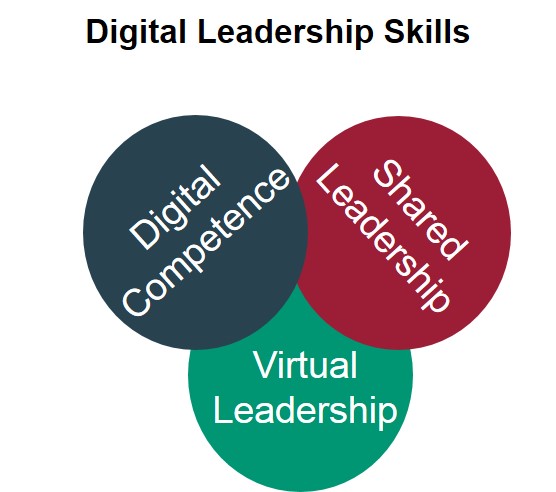
Managing the crisis with digital leadership skills
Digital work requires more than mere structural and technical know-how Shared leadership offers an ideal approach to remote leadership Building trust and visibility despite of spatial distance as well as enabling employees proved as best practices After having Asia in its grip, Covid-19, better known…

Lukas M. Fastenroth
Senior Consultant & Akademischer Leiter Consulting, Kienbaum Institut

Prof. Dr. Walter Jochmann
Managing Director | HR & Organisation Transformation
- Digital work requires more than mere structural and technical know-how
- Shared leadership offers an ideal approach to remote leadership
- Building trust and visibility despite of spatial distance as well as enabling employees proved as best practices
After having Asia in its grip, Covid-19, better known as Corona, is now dominating Europe and America. Radical measures of both social and economic nature are the result. However, these actions are necessary in order to keep the rapid spread of the virus at bay.
The economic consequences of these measures are already visible: Many organizations take on responsibility with regards to their employees’ health and, as a consequence, send them to work from home if possible. However, not every company has already implemented structures that enable working from home. Therefore, many organizations are forced to upgrade their technological infrastructure to stay capable of doing business during these uncertain times of crisis. Consequently, there are massive challenges for organizations ahead.
Switching to virtual, digital work however, is not only a structural and technological matter, but foremost a question of leadership. Digital leadership skills are nowadays inevitable to lead teams effectively from distance. At Kienbaum, we have been dealing with this topic for a long time which has led to a profound understanding of digital leadership skills.
The Triad of Digital Leadership Skills
Digital leadership skills consist of three components: Virtual leadership, shared leadership, and digital literacy (Fastenroth, Knappstein & Jochmann, 2019).
Virtual leadership means that now the social influence of leadership is executed by means of digital communication technologies. In order to lead effectively via virtual leadership, a strong digital fluency, deep knowledge and a positive attitude towards digital technologies – a digital mindset – are indispensable.
Remote and partly asynchronous instead of face-to-face collaboration reduces the control options for leaders. That is why they have to increasingly pass on responsibilities and transfer them to their employees. This approach is called shared leadership, whereby the executive operates as a coach and extends his employees’ responsibilities with regards to shared goals as well as integrating them into decision-making processes to secure long term motivation and the performance of the team. Studies demonstrated that shared leadership influences team performance positively when creative solutions are required and when both task complexity and dependence between team members are high for the successful processing of a task.

How to lead virtual teams – best practices
Besides a comprehensive understanding of digital leadership, the question arises what executives have to consider in real life when it comes to virtually leading their team(s) to success. Based on Malhotra, Maychrzak, and Rosen (2007), we would like to present the following best practices to you:
1. Building and maintaining trust
A culture based on trust and support is inevitable for the successful functioning of virtual teamwork. You can build trust by regularly conducting virtual get-togethers; for example, a virtual team meeting every Monday and Friday to discuss weekly goals and progresses. In doing so, you have to consider the principle of „equal suffering“. According to this principle, the team meetings should take place at times that fit all team members. Especially team members in different time zones or members that have to take care of their children should be taken into consideration. If it is not possible to get everyone together, the time of the team meeting should change, so that everyone is equally suffering or profiting during the meetings. Further, virtual get-togethers should be used to establish rules, processes and behavioral norms in order to get everyone on the same page on how to behave within the team.
2. Managing Productivity
Use digital technologies to increase productivity. This is primarily about efficient planning and execution of virtual team meetings. For instance, you should use asynchronous communication such as e-mail or digital platforms for collaboration and project management to prepare the team meeting. Obtain information and details on progresses in certain projects and subsequently discuss them synchronously within the team.
3. Promoting distributed diversity
Diversity is a construct of many faces. Although the Corona-crisis does not increase the cultural diversity in your team, other facets of diversity play an even more important role: Integrating different competence profiles based on various professional backgrounds to generate solutions is essential for the team. Without face-to-face communication, team members are often not aware of the useful skills their colleagues possess. Therefore, executives should establish competence profiles of each employee and spread them within the team. Asynchronous communication technologies (e.g. digital chat platforms) could also be used to discuss diverse opinions, proposals and facts within the team.
4. Communication for target reviews
Even in virtual teams, monitoring and target achievements are quite important. Asynchronous communication technologies offer numerous opportunities for tracking performance. However, you need to be careful, because strictly regulating and monitoring your employees can easily lead to micromanagement and thereby undermine productivity and motivation in the same way as a lack of control does. That is why it is important to find the right balance, because shared leadership does not mean the absence of leadership (laissez-faire leadership).
5. Increasing visibility
With virtual teams there is the danger for certain team members not to be perceived outside the team. If you switch to virtual teamwork you have to consider that this applies to all committees in which you and your team members are normally represented face-to-face, for instance, meetings with higher executives or board members. Such meetings should either also be conducted virtually or you as the leader – in case you now participate on your own – should make sure that the performance and contribution of your employees are perceived in these meetings. Otherwise there is the risk that your team members do not see their contribution outside the team and thus lose their motivation in the long term.
6. Enabling of team members
Finally, continuous and appropriate enabling of your employees is a crucial factor. Praise good performances in virtual get-togethers. In doing so, they feel appreciated and experience recognition by fellow team members. By that, the team cohesion improves as does the motivation of your employees – in spite of spatial distance.
We hope that these best practices prove valuable and helpful in your (new) everyday work. In case you have any questions, do not hesitate to get in touch with us. Stay healthy!
By Walter Jochmann and Lukas M. Fastenroth
Sources:
- Fastenroth, L. M., Knappstein, M., & Jochmann, W. (2019). Digitale Führungskompetenz – eine neue Kurzskala hilft bei der Messung. Wirtschaftspsychologie Aktuell, 4, 48-52.
- Malhotra, A., Majchrzak, A., & Rosen, B. (2007). Leading Virtual Teams. Academy of Management Perspectives, 21(1), 60-70.
